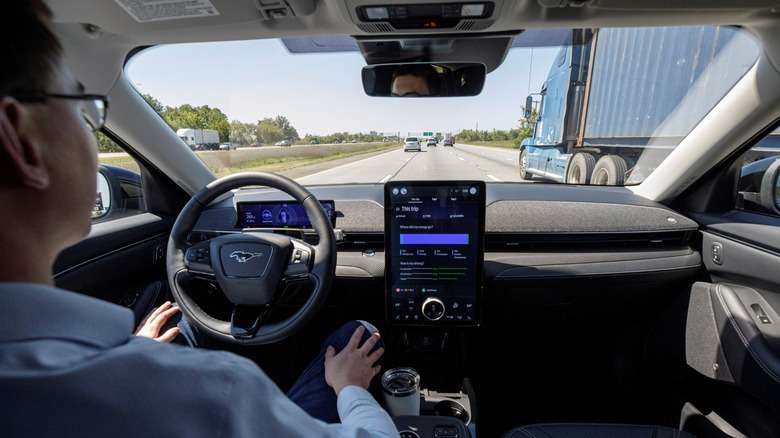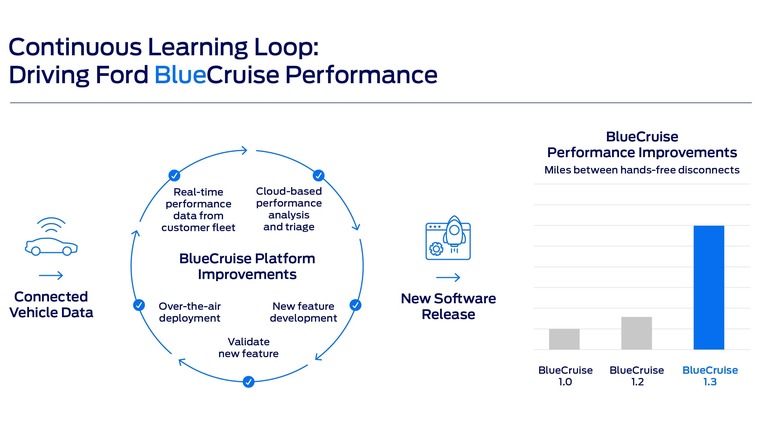Some Ford Owners Are Now Getting This Big BlueCruise Hands-Free Upgrade
Back in 2022, Ford released its proprietary hands-free highway driving software, BlueCruise. While BlueCruise can't completely take over the highway driving experience from the actual driver, its sensibly-designed systems can handle the brunt of some of its more mindless tasks. Earlier this year, BlueCruise was refined further with the release of its version 1.2 update, but Ford hasn't been resting on its laurels since then. Just a few short months later, Ford is already getting ready for the next major BlueCruise update, and some lucky drivers will get to experience it for free.
Today, Sammy Omari, Ford's Executive Director of Advanced Driver Assist System Technologies, announced that version 1.3 of BlueCruise will be made available in select Ford vehicles later this summer. Not only that but owners of Mustang Mach-E vehicles produced from 2021 to 2023 will receive the new version at no additional charge in the form of a software update.
Ford tested, driver approved
Since the release of BlueCruise 1.2, Ford engineers have been working on the next iteration of the system, looking to improve its performance and consistency. According to Sammy Omari, pre-release testing of the updated system has produced good results.
"During our internal testing across a variety of roads in the U.S., BlueCruise 1.3 stayed engaged in hands-free mode for an average of 3X longer compared to BlueCruise 1.2," Omari wrote in an announcement on LinkedIn. "We saw an even larger performance improvement from BlueCruise 1.0 to BlueCruise 1.3 with an average of 5X longer engagement in hands-free mode."
Ford's secret weapon in developing BlueCruise at such unprecedented speeds is its "Continuous Learning Loop." By utilizing driving data obtained from BlueCruise-equipped Ford vehicles, voluntarily shared by Ford drivers, Ford engineers can create large and small-scale simulations to train the BlueCruise system. Thanks to the sheer breadth of available data, the system can be simulated in various situations, with modifiers like traffic types, trip length, geographic location, and more. The system is run through all of these simulations, allowing engineers to swiftly determine what's working, what's not working, and where they can innovate further with additional updates, tweaks, and features.
"The hardware and Ford-developed software stack is laying the foundation for how we will be able to seamlessly deliver hands-free driving excellence quickly to the customer in the future," Omari said. "This is only the beginning."

